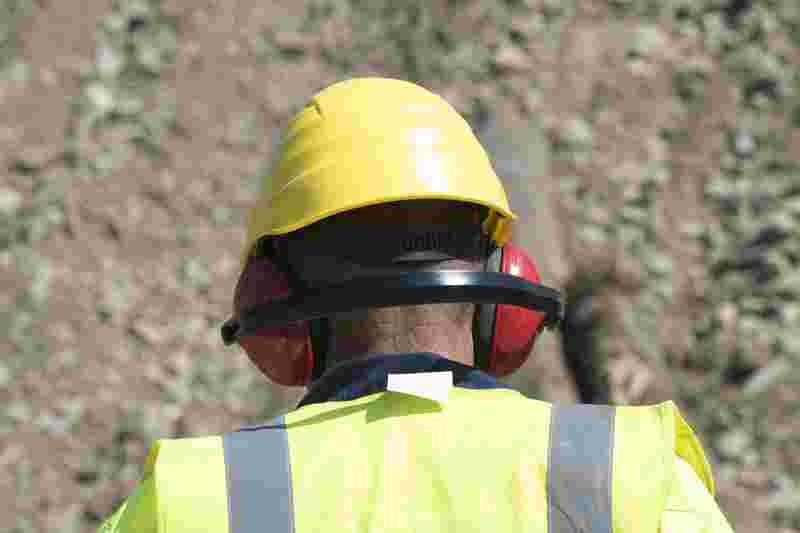Construction sites are among the noisiest workplaces in the UK, exposing workers to high levels of sound that can lead to permanent hearing damage. From heavy machinery and power tools to demolition and piling operations, the construction industry continuously poses a significant risk of noise-induced hearing loss (NIHL). This article explores the risks of noise exposure, the importance of hearing protection, and what employers and workers can do to ensure safer work environments.
The Risks of Noise Exposure
Noise exposure isn't just an annoyance — it's a serious health hazard. Prolonged exposure to sounds above 85 decibels (dB) can result in permanent hearing damage. For reference, many tools and machines on a construction site, such as jackhammers and circular saws, can emit noise levels well above 100 dB. Even short bursts of very loud noise, such as those from impact tools or explosives, can cause instant and irreversible hearing loss.
Aside from NIHL, high levels of noise can also contribute to:
-
Stress and fatigue
-
Poor concentration
-
Increased risk of accident (due to missed verbal warnings or alarms)
-
Communication difficulties on site
These effects don't just impact the individual — they can have broader implications for team coordination, safety compliance, and overall site productivity.
UK Legislation on Noise in the Workplace
The Control of Noise at Work Regulations 2005 sets out clear responsibilities for employers in controlling noise exposure. These regulations state that employers must:
-
Assess risks from noise at work
-
Provide hearing protection if exposure exceeds action levels (80 dB for lower exposure action and 85 dB for upper exposure action)
-
Implement control measures to reduce noise wherever reasonably practicable
-
Offer regular hearing checks (audiometry) for those exposed to high noise levels
The Health and Safety Executive (HSE) enforces these rules, and non-compliance can result in penalties, legal action, or even site closures.
Hearing Protection Solutions
1. Elimination and Substitution
The most effective way to reduce noise is to eliminate it at the source. Where possible, employers should:
-
Use quieter equipment
-
Replace noisy processes with quieter alternatives
-
Redesign tasks to reduce exposure time
2. Engineering Controls
If elimination isn't possible, reduce noise levels with engineering solutions:
-
Enclosures and barriers around noisy machinery
-
Damping materials to absorb sound
-
Silencers or mufflers on exhaust systems
3. Administrative Controls
Managing how work is carried out can also reduce risk:
-
Rotate workers to limit their exposure time
-
Schedule noisy tasks when fewer people are present
-
Post clear warning signs in high-noise areas
4. Personal Protective Equipment (PPE)
When noise can't be adequately controlled, workers must use hearing protection such as:
-
Earplugs – small, inexpensive, and ideal for long-term use
-
Earmuffs – more suitable in high-noise areas or where ease of use is essential
-
Custom-moulded ear protection – tailored to the individual for maximum comfort and effectiveness
It's crucial that PPE is comfortable , correctly fitted , and worn consistently . Training should be provided so that workers understand how to use and care for their hearing protection properly.
Training and Awareness
Raising awareness about the dangers of noise exposure is essential. Employers should offer regular training sessions covering:
-
The health effects of noise
-
How to identify high-noise areas
-
Correct use of hearing protection
-
The importance of early reporting of hearing issues
Encouraging a culture of safety where workers feel empowered to speak up about excessive noise or faulty equipment can lead to better overall site safety.
Regional Approaches and Support
Across the South East, different counties are actively promoting hearing protection as part of wider workplace safety campaigns. For instance:
-
Health and Safety Surrey initiatives have encouraged the use of quieter technologies and regular site noise assessments in urban developments.
-
Health and Safety Hampshire has seen a rise in construction safety training, with a strong focus on hearing conservation in larger infrastructure projects.
-
In Health and Safety Sussex programs, local authorities and training providers have collaborated to distribute hearing protection kits to smaller contractors and raise awareness among self-employed workers.
These regional efforts demonstrate how a targeted approach can make a significant difference in protecting construction workers from noise-related health issues.
Conclusion
Noise-induced hearing loss is entirely preventable — yet once it occurs, it's irreversible. Employers in the construction industry must take noise exposure seriously and implement all reasonable practicable measures to reduce risk. From engineering controls and protective equipment to training and regional initiatives, there are many ways to secure workers' hearing.
As construction projects grow in size and complexity, prioritizing hearing protection is not just a legal obligation — it's a moral one. With proper planning, education, and commitment, the construction industry can continue building a safer, quieter future for its workforce.




